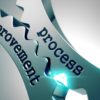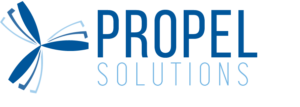The COVID-19 pandemic has taught businesses many important lessons around adaptability to change and being nimble with what gets thrown your way. Yet managing and being a part of a distributed workforce is still new to many people. Through the challenges of a pandemic, businesses have learned that having a remote workforce is possible. However, there is still a gap with how to effectively manage distributed workforces.
Before COVID-19, many companies were reliant on meeting in boardrooms to review physical print outs of documents. Now with employees working remotely, these companies feel like they have no control over what their staff are doing or how they are performing. In addition, staff that were so used to the dynamic office environment are sitting at home feeling like they are floundering in uncertainty without having the guidance they were used to. Managing and being a part of a distributed workforce is still new to many people. The following three tools are easy to implement, totally customizable and very powerful. For everyone in the organization, these tools will provide clarity, accountability and motivation to ensure that working remotely does not mean productivity must be sacrificed.
1. Effective Performance Analytics
Defining, developing, and tracking Key Performance Indicators (KPI’s) is crucial to an organization’s success. If staff are not aware of targets, how can they be expected to achieve them? John Rossman, author of Think Like Amazon: 50 ½ Ideas to Become a Digital Leader, says that metrics should be used very intentionally, and not just as a formality when discussing daily performance. Companies need to be very specific about what aspects of performance they measure and how they measure them, to unearth the details that really represent how well the company is doing.
This data should be collected as easily as possible and as regularly as necessary. Every industry, company, and manager are different. As a result, there is not one blanket solution to gathering this data. Our advice is to keep it simple. Systems that require a lot of time and technical processes will discourage teams from using them and as a result, produce inaccurate data. Typically, a Daily Operating Report provides a comprehensive overview of the progress being made by a team.
Once you have developed the key KPI’s and planned how to gather the data, you need to use it effectively. People are very visual and respond more to graphs and colors than numbers and words. Therefore, a tool like PowerBI, will allow you to turn data into valuable insight through analyzing data and representing it in a way people respond to. Through making the information easily visible, this powerful application will allow workforces to regularly understand their performance and drive their accountability.
2. Daily Huddles
One of the biggest challenges with managing a distributed workforce is generating alignment within the team to ensure that all are working towards the same goal. When people work in silo’s, it’s easier for them to get stuck in a rut or lose direction for the task at hand. We recommend having Daily Huddles in which all available team members meet virtually to provide a succinct update on operations since the previous meeting.
We recommend keeping these huddles as short and efficient as possible. Start the meeting off on a positive note by doing a round table of success stories from the previous day. These can be big, such as landing a new contract, or small, such as learning a new skill. These success stories highlight progress being made and create a culture of positivity.
Next, run through the pertinent results since the previous meeting, as well as what tasks are scheduled for the coming day. By listing all activities completed and milestone achievements, you focus on progress made and productivity. Additionally, this generates accountability by comparing what was planned for the previous day versus what actually took place.
This summary allows not only managers, but the whole team to get an understanding of the project’s status. During these meetings, team members that are experiencing challenges are given time to voice their concerns in a forum the promotes collective problem solving. Having many eyes on the same problem allows solutions to be generated with the perspective of the whole team, which improves the probability of success. In addition, it allows managers to reallocate capacity to tasks where there is strain or priority needs to be reassigned.
3. Scheduled Check-Ins Throughout the Day
Managing a remote team is not a one-time event that happens at the start of each day. Effective performance analytics and daily huddles set the foundation for the day, but what about the rest of the day?
We recommend leaders block time in their calendars – the same time each day, at least twice a day – to check in on teams and allow them to bring forward any questions they may have. Think of this time like a professor’s “office hours”. Team members will be aware that this time is available for support, and they will anticipate a check-in. This allows managers to proactively problem solve with their teams if there are any obstacles to achieving the planned results for the day.
Start by determining when you will schedule your check-ins. We recommend one check-in before lunchtime, and one before the end of the day. Next, block this time off in your calendar so you are available to connect with your teams. Communicate these times to your team and inform them of how they can leverage this time to benefit them.
When the time comes for your schedule check, choose the approach that works best for your team. We have seen leaders send their staff a Teams message as a check in, having everyone reply with an emoji if they are feeling good. If anyone is off-track or requires support, they can reach out.
Another great approach is to create a re-occurring Teams meeting for Schedule Checks, and have employees join the meeting if they need support during this time. Whatever your approach, there is tremendous value in checking in with teams throughout the day to offer support.
Propel has years of experience working across multiple industries developing KPI’s tailored to unique company requirements. These KPI’s have been used to gain a data-based understanding of a company’s performance and allowed them to make informed decisions.
Propel can also offer the online tools required to solicit operational data, conduct data analysis, automate reporting and facilitate team meetings. Using these tools, you will quickly learn how to effectively manage distributed workforces.








